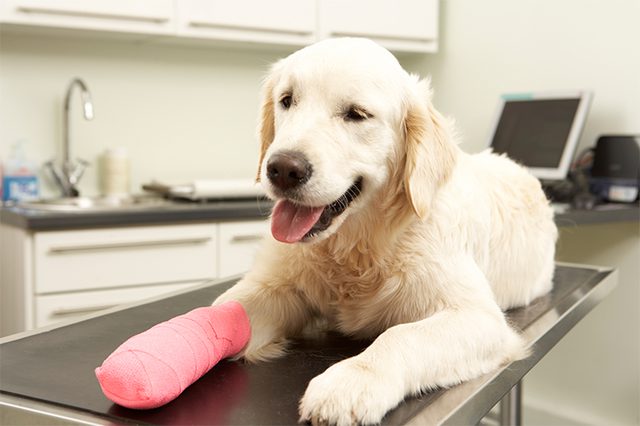As pet owners, our furry companions are not just animals but beloved members of our family. We go to great lengths to keep them safe and healthy, but sometimes unforeseen accidents or illnesses can occur. In these situations, having the right tools on hand can make all the difference. This is where a pet first aid kit comes in.
A pet first aid kit is an essential item that every pet owner should have. It contains a variety of supplies and equipment to help address minor injuries, illnesses, and emergencies that your pet may encounter. In this comprehensive guide, we will cover everything you need to know about finding the perfect first aid kit for your furry friend.
Essential Components of a Pet First Aid Kit

A well-stocked pet first aid kit should contain the following essential components:
- Bandages: These are used to cover wounds and control bleeding. Look for bandages specifically designed for animals, as they may be more flexible and easier to apply.
- Antiseptic: This is used to clean and disinfect wounds to prevent infection.
- Gauze pads and rolls: These are used for wrapping wounds or providing padding under bandages.
- Tweezers: These come in handy for removing splinters or foreign objects from your pet's fur.
- Scissors: A good pair of scissors is essential for cutting bandages or gauze.
- Antibiotic ointment: This helps prevent infections in wounds.
- Disposable gloves: These are essential for protecting yourself from any potential bodily fluids while administering first aid to your pet.
- Saline solution: This is used for flushing out wounds or debris from your pet's eyes.
- Digital thermometer: A thermometer is crucial for monitoring your pet's temperature, especially in cases of fever or hypothermia.
- Emergency contact information: Keep a list of emergency numbers for your veterinarian and local animal hospital.
- Pet's medical records: In case of an emergency, it is helpful to have your pet's medical history on hand for quick reference.
Choosing the Right Pet First Aid Kit for Your Needs

When it comes to choosing a pet first aid kit, there are several options available. The type of kit you choose will depend on your pet's needs and your level of preparedness.
Basic Kits
Basic kits are the most common and affordable option. They typically contain essential items for addressing minor injuries and illnesses, such as bandages, antiseptic, and gauze. These kits are suitable for general first aid needs and can be a good starting point for new pet owners.
Extended Kits
For pet owners who want to be more prepared for emergencies, an extended first aid kit may be a better option. In addition to basic items, these kits may include supplies for treating more complex emergencies, such as fractures, wounds, and burns. These kits may also come with additional tools like a pet first aid guidebook or a pet CPR mask.
Species-Specific Kits
Another option is to purchase a first aid kit tailored to your specific pet's species. For example, there are kits available for dogs, cats, rabbits, and other animals. These kits may include specialized items relevant to their health needs, such as tick removers for dogs or hairball medication for cats. While they may be more expensive, they provide peace of mind knowing that you have all the necessary supplies for your particular pet.
Where to Find Pet First Aid Kits

There are several places where you can find pet first aid kits. Some of the most common sources include:
Veterinary Clinics
Your veterinarian is an excellent resource for finding a high-quality first aid kit for your pet. Many vet clinics offer pre-assembled kits tailored to the needs of different animals. You can trust that these kits have been carefully put together with the right products and recommendations from experts.
Pet Supply Stores
Retail chains and pet specialty stores also carry a wide range of first aid kits, from basic to extended options. These stores may offer a variety of brands and types of kits, giving you more options to choose from. You may also find discounts or coupons for these kits, making them a cost-effective option.
Online Retailers
In today's digital age, online shopping has become increasingly popular, and the same goes for pet first aid kits. Websites like Amazon and Chewy offer a vast selection of first aid kits, including specialized species-specific products. Purchasing online is convenient, and you can easily compare prices and read reviews from other pet owners.
How to Use a Pet First Aid Kit
Having a pet first aid kit is only half the battle; knowing how to use it is equally important. Here are some general guidelines on how to use a first aid kit in case of an emergency:
- Remain calm: In any emergency situation, it's essential to stay calm. This will help your pet remain calm as well.
- Assess the situation: Before administering any first aid, assess your pet's condition and determine if it is safe to approach or handle them.
- Stop bleeding: If there is bleeding, apply direct pressure using gauze or a clean cloth until it stops.
- Clean and disinfect wounds: Use antiseptic and saline solution to clean and disinfect any wounds. Be gentle, as your pet may be in pain.
- Bandage wounds: Wrap wounds with bandages to keep them clean and prevent further injury.
- Seek veterinary care: Even if you have treated your pet's injury at home, it's crucial to seek veterinary care as soon as possible for proper treatment and follow-up care.
DIY Pet First Aid Kits: A Step-by-Step Guide

If you prefer to create your own pet first aid kit, here is a step-by-step guide to help you:
Step 1: Choose the Right Container
The first step in creating a DIY pet first aid kit is to select a suitable container. You can use a plastic or metal container with a handle and a secure lid. Alternatively, you can use a backpack or tote bag.
Step 2: Gather Essential Items
Next, gather all the essential items mentioned above in the "Essential Components of a Pet First Aid Kit" section. Make sure to include enough supplies for multiple uses, as you may need to replace them after each use.
Step 3: Add Species-Specific Items
If you have a specific species of pet, make sure to include any specialized items they may need. For example, if you have a dog, you may want to add a tick remover or a muzzle in case you need to administer first aid.
Step 4: Label the Container
To ensure easy identification, label your first aid kit with your pet's name and your contact information.
Pet First Aid Training for Owners

Having a pet first aid kit is vital, but knowing how to use it correctly is equally important. Consider taking a pet first aid course to learn basic lifesaving skills for your furry friend. The American Red Cross offers online courses that cover topics such as CPR, choking, and first aid for common pet emergencies.
Emergency Preparedness for Pets: The Importance of First Aid

As pet owners, it is our responsibility to be prepared for any emergency that may arise. Having a pet first aid kit readily available can save precious time in critical situations. It also gives you peace of mind knowing that you have the necessary supplies to provide immediate care for your pet until you can seek professional help.
It's also important to note that a first aid kit is not a substitute for veterinary care. In case of an emergency, always seek professional help for proper treatment and follow-up care.
Common Pet Injuries and How to Treat Them

Here are some of the most common pet injuries and how to treat them:
- Lacerations: Clean the wound with antiseptic and apply a bandage.
- Burns: Run cool water over the burn and cover it with a clean cloth. Seek veterinary care if the burn is severe or covers a large area.
- Fractures: If possible, splint the broken limb before transporting your pet to the vet.
- Animal bites: Wash the wound with soap and water and seek medical attention.
- Insect stings: Remove the stinger with tweezers and apply a cold compress. If there are signs of an allergic reaction, seek veterinary care immediately.
Veterinary Recommendations for Pet First Aid

It's essential to consult your veterinarian on the best first aid kit for your pet. They can guide you on what supplies and materials are necessary for your specific pet's needs. They can also provide recommendations on where to purchase a quality first aid kit.
Conclusion
In conclusion, having a pet first aid kit is crucial for every pet owner. It provides the necessary supplies and equipment to address minor injuries and emergencies that your pet may face. By knowing how to use the kit correctly and being prepared for potential emergencies, you can ensure the safety and well-being of your beloved furry companion. Remember to regularly check and restock your first aid kit, and consider taking a pet first aid course for added preparedness. With these tips in mind, you can confidently handle any unexpected situations that may arise with your pet.


